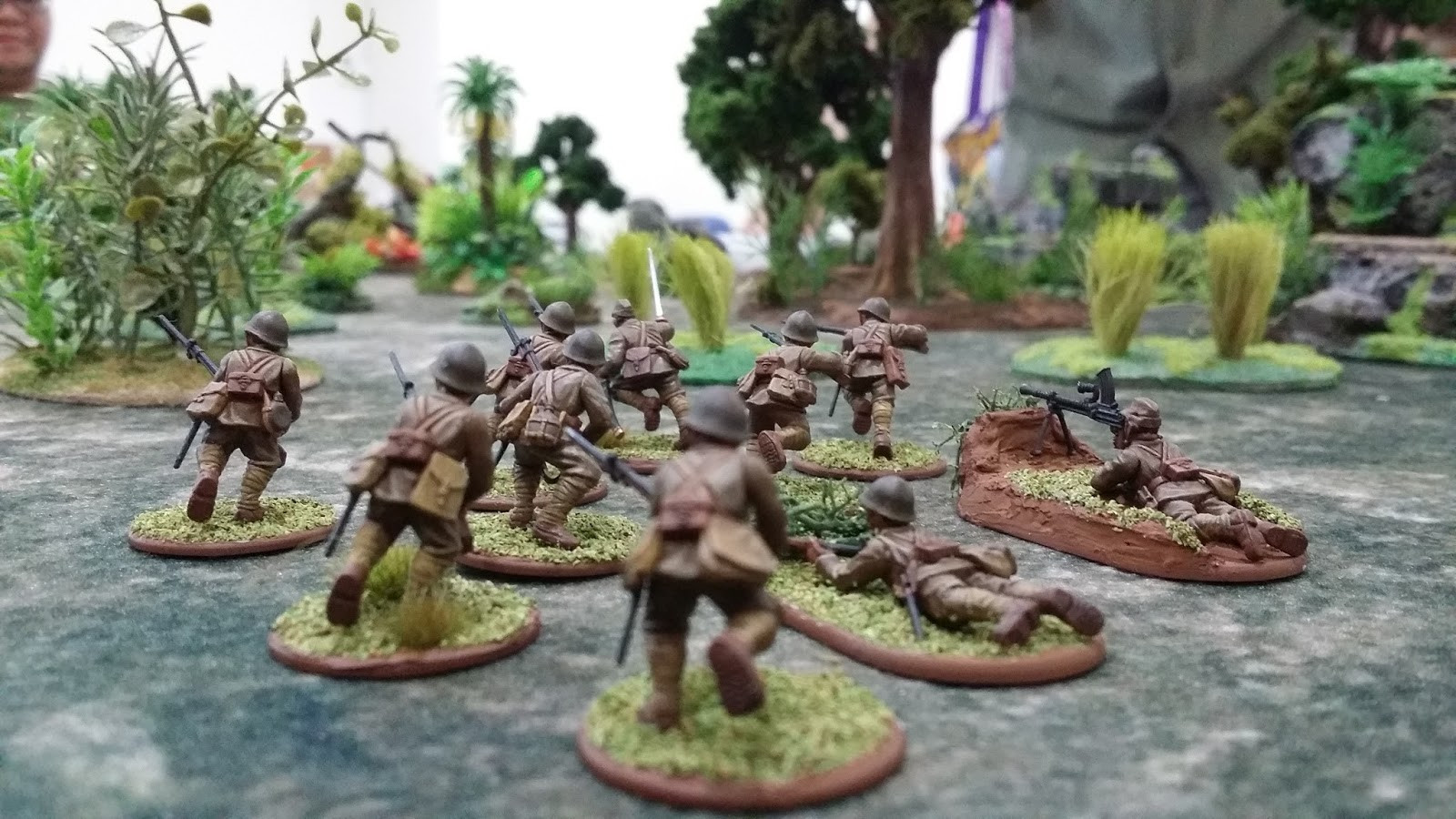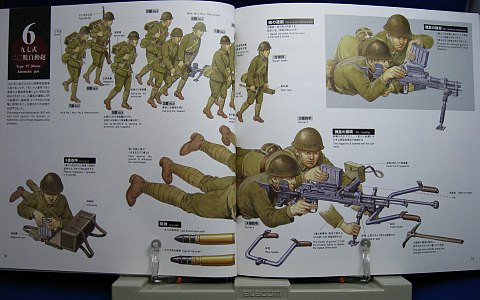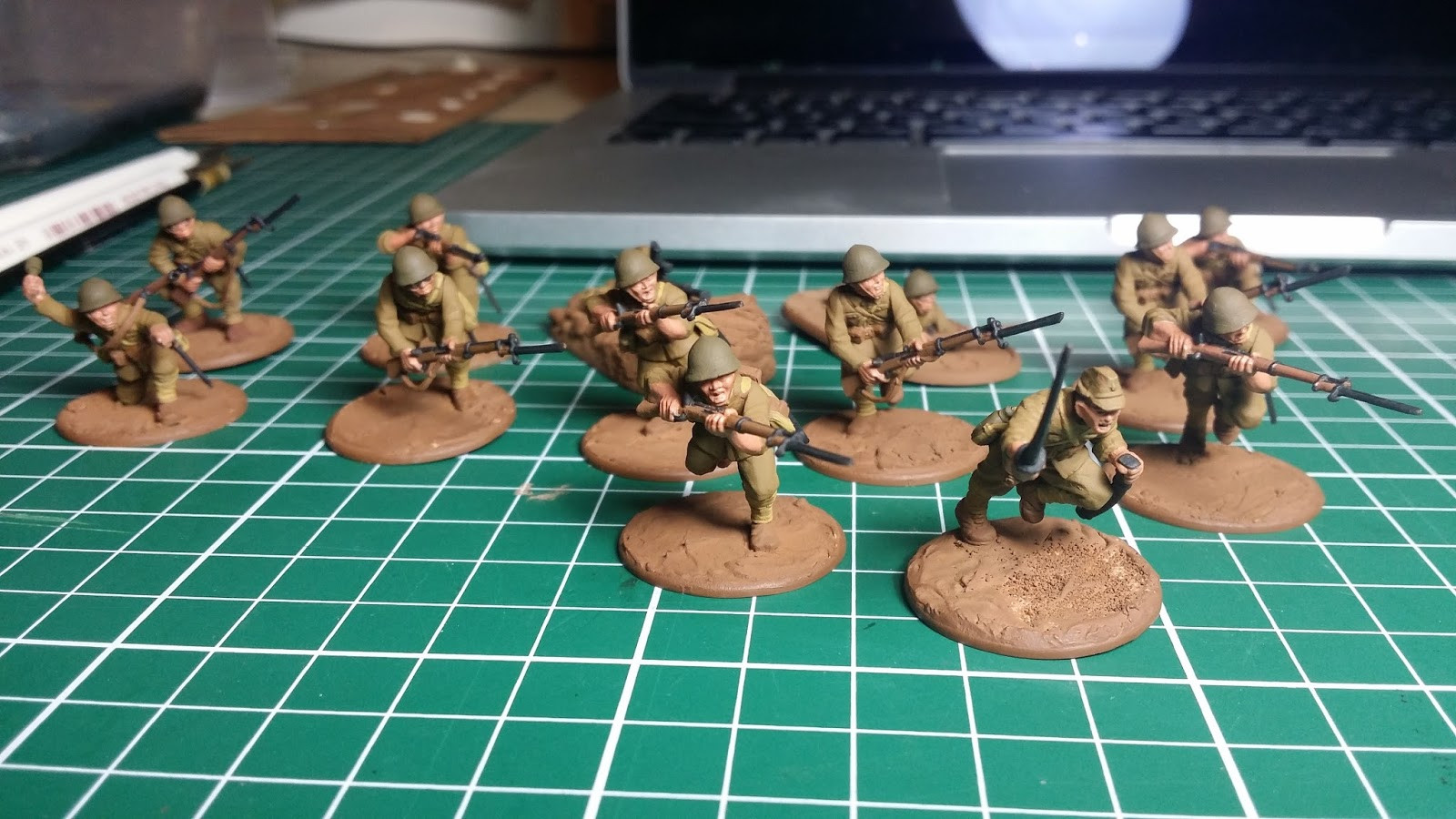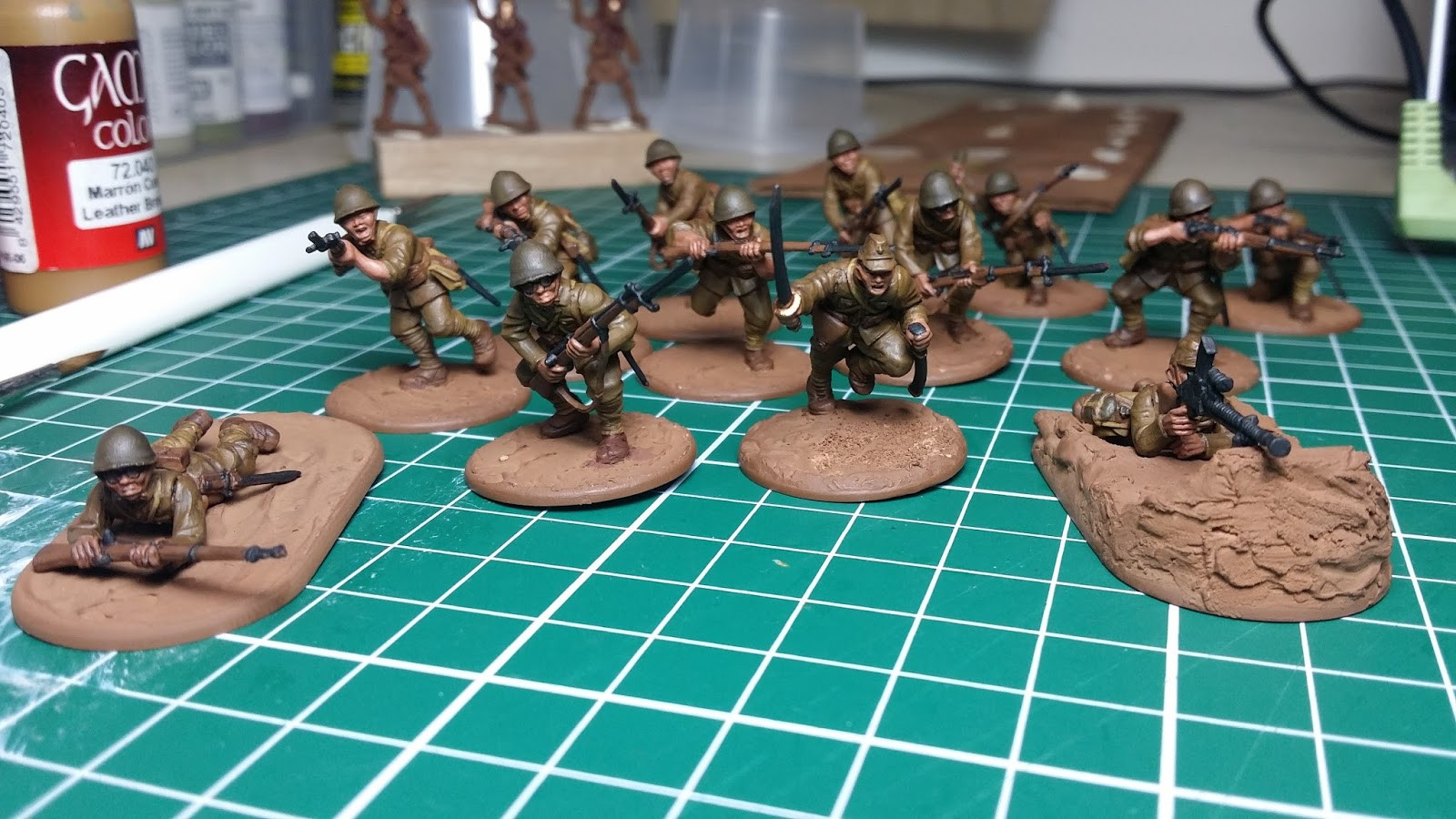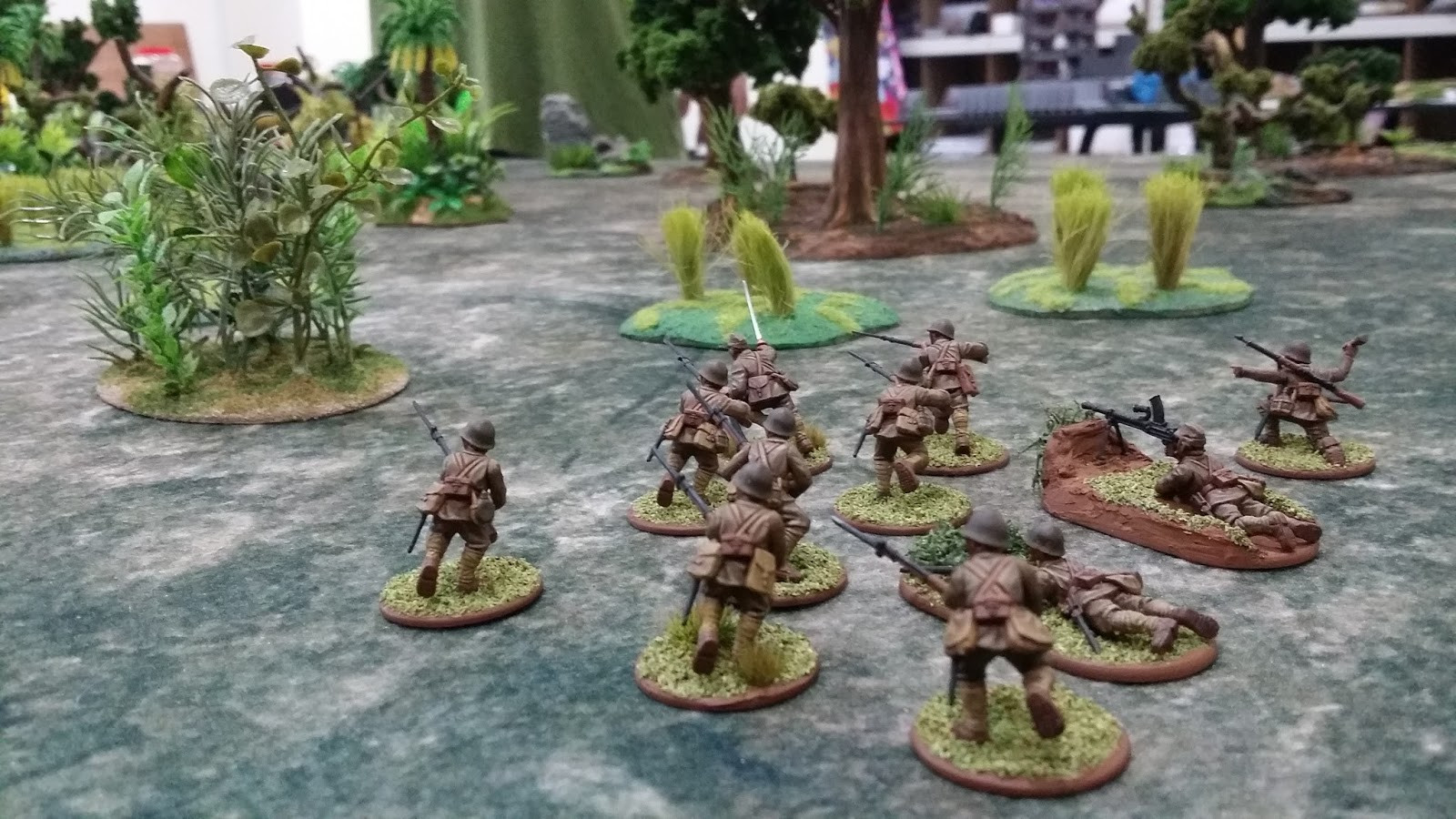Creating authentic-looking Japanese Imperial Army (IJA) uniforms for WWII miniatures can be a rewarding but challenging aspect of historical wargaming. Many enthusiasts aim for accuracy, seeking to replicate the distinctive colors and appearance of these uniforms across various campaigns, from the early Sino-Japanese War to the Pacific Theater. This guide details a painting approach to achieve a realistic representation of Japanese WWII uniforms, focusing on color choices and techniques suitable for miniature figures.
A squad of painted Japanese Imperial Army miniatures ready for wargaming, demonstrating the chosen uniform colors.
The Quest for the Ideal Japanese Uniform Color
Historical sources and expert opinions often highlight the variability of Japanese uniform colors during World War II. Factors such as production inconsistencies, material shortages, and the wear and tear of combat conditions led to a spectrum of shades, ranging from khaki to green. Reference materials, like Osprey Publishing’s “Japanese Infantryman 1937-45” and Ritta Nakanishi’s detailed books on Japanese military attire, illustrate this color variation.
Reference book showcasing Japanese Infantry Arms in World War II, essential for historical accuracy in miniature painting.
Initially, Vallejo Model Color 923 Japanese Uniform WWII might seem like an obvious choice. However, many painters find this color to be too yellow and not accurately representative of the hues depicted in historical references. While some suggest it might resemble uniforms used during the invasion of China in the late 1930s, a more versatile and arguably more accurate option for general WWII Japanese uniforms is needed. This color is also noted to be similar to the khaki uniforms worn by Chinese forces of the same period.
Opting for “English Uniform” as a Base Color
After researching and comparing various paint options, Vallejo Model Color 921 English Uniform emerges as a strong contender for a base color. This shade provides a green-khaki tone that aligns well with the olive-green hues often seen in depictions of Japanese WWII uniforms. While subtle variations existed, “English Uniform” offers a solid foundation that can be further enhanced with washes and highlights to create depth and realism. The inherent variability of wartime production allows for some artistic license within the khaki-green spectrum, providing flexibility in achieving the desired look.
To further enrich the color and add shadow, Army Painter Strong Tone wash is employed. This wash significantly deepens the base color, shifting it towards a more authentic, weathered olive drab appearance suitable for portraying combat uniforms.
Painting Recipe: Achieving the Japanese Uniform Look
The following paint recipe outlines the steps and colors used to paint Japanese WWII uniforms on miniature figures, aiming for a balance of historical accuracy and visual appeal on the tabletop:
Paints Used: (Vallejo Model Color unless specified)
- Basecoat, Belts, Shoes, Ammo Pouches, Rifle Stock: Army Painter Leather Brown Spray, with edge highlights using a 50/50 mix of Vallejo Beasty Brown and Foundry North African Flesh B. Beasty Brown closely matches the Army Painter Leather Brown Spray for seamless touch-ups.
- Uniforms: Vallejo Model Color 921 English Uniform, with third highlights using a 75/25 mix of English Uniform and Vallejo Pale Sand.
- Puttees, Bread Bags, Webbing: Vallejo German Camo Ochre Orange, with third highlights using a 75/25 mix of German Camo Ochre Orange and Pale Sand.
- Rifle Metal, Bayonet Scabbard: Black, highlighted with Gunmetal Grey.
- NCO’s Shin Gunto (Sword): Black base, layered with Gunmetal Grey, and highlighted with Silver.
- Skin: Foundry North African Flesh B.
- Helmet, Water Flask: Olive Drab achieved by mixing Vallejo 921 English Uniform with a touch of black to darken the tone.
Painting Process:
- Base Coating: Apply Army Painter Leather Brown Spray to basecoat areas designated for leather and wood components.
- Blocking in Base Colors: Apply base colors to their respective areas: English Uniform for the main uniform, German Camo Ochre Orange for webbing and fabric gear, and other base colors as listed above.
Miniatures with base colors blocked in, showing the initial brighter appearance of the uniform before washing.
- Applying Army Painter Strong Tone Wash: Apply a generous coat of Army Painter Strong Tone wash over the entire miniature figure. Ensure the wash settles into recesses and creases to create shadows and enhance detail.
The effect of Army Painter Strong Tone wash, darkening and enriching the uniform color to a more realistic olive drab.
- Highlighting: After the wash is completely dry (ideally after 24 hours), apply highlights to raised areas. Use the base colors and highlight mixes as specified in the paint list. For uniforms, use Vallejo 921 English Uniform for the first highlight and a 75/25 mix of English Uniform and Pale Sand for the final, sharper highlights.
Final Touches and Battlefield Ready
Highlighting helps to bring back definition and prevent the miniatures from appearing too flat after the wash. While initial highlights might seem stark under bright light, they balance out when viewed at tabletop distances, ensuring the details are visible during gameplay. The resulting uniform color achieves a “grubby” and realistic look, evocative of Japanese soldiers in the field. This finish resonates with depictions seen in films like “Oba: The Last Samurai,” which portrays the worn and battle-hardened appearance of IJA troops.
A completed squad of Japanese infantry miniatures, showcasing the final painted uniforms ready for tabletop wargaming.
This painting method provides a practical and effective approach to rendering Japanese WWII uniforms for miniature wargaming. The use of Vallejo English Uniform as a base, combined with Army Painter Strong Tone wash and selective highlighting, delivers a visually appealing and historically plausible representation for your Imperial Japanese Army miniatures.

